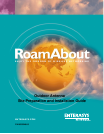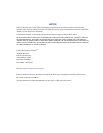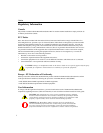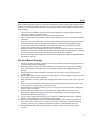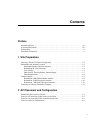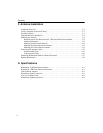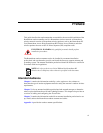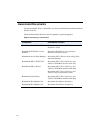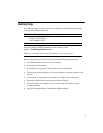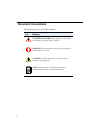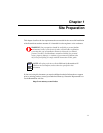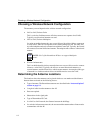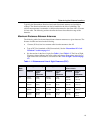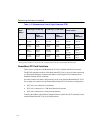
iii
Notice
When connecting RoamAbout devices to equipment other than the Enterasys Networks RoamAbout products
described in this guide, the antenna installation may no longer comply with the regulations as defined above.
In this case, it is the responsibility of the user to ensure that the entire antenna installation complies with local
radio regulations.
• Consult the user documentation that came with the other equipment to determine whether additional
instructions, cautions, or regulations apply.
• Verify that the antenna installer is aware of these issues and regulations.
• There is no guarantee that interference to radio communications will not occur in a particular commercial
installation.
• If this device does cause interference, which can be determined by turning the host equipment off and on,
the user should refer to the host equipment documentation, or contact the local equipment supplier.
• In case the device does cause interference with an authorized radio service, the user/operator shall
promptly stop operating the device until interference is eliminated.
• Enterasys Networks is not responsible for any radio or television interference caused by unauthorized
modification of the devices included with the RoamAbout Outdoor Kit, or the substitution or attachment
of connecting cables and equipment other than that specified by Enterasys Networks.
• The correction of interference caused by such unauthorized modification, substitution or attachment is the
responsibility of the user.
Electrical Hazard Warnings
1. Antennas and cables are electrical conductors. Do not touch antennas, RoamAbout Lightning Protectors,
or antenna cables during a thunderstorm.
2. The location where you install each antenna must be at a safe distance from power lines or telephone
lines. The safe distance should be at least twice the height of the antenna mast plus the height of the
antenna.
3. The Contact between antenna components and power lines can result in serious personal injury, or
possibly death.
4. Do not install antennas or cables where there is any possibility of contact with high-voltage arc-over from
power cables or service drops to buildings.
5. During installation or removal, the antenna, supporting mast and/or tower must not be close to any power
lines.
6. The low-loss antenna cable that connects the antenna to the lightning protector must be at least 1 meter
(3 feet) away from any high voltage or high current cable.
7. Check whether the antenna mast and its guy wires or wall bracket are positioned correctly and secured
properly to the roof or wall(s).
8. Check whether the grounding system for the antenna mast, the RoamAbout Access Point, and
RoamAbout Lightning Protector have been installed. The grounding system must comply with the
requirements as described in the Chapter 3.
9. Always consult a qualified electrician if you are in doubt as to whether the antenna mast, Lightning
Protector, and/or RoamAbout Access Point is properly grounded.
10. The low-loss antenna cable between the antenna and the lightning protector must be grounded at all
times. If the cable is disconnected at one end for some reason (for example, to replace the lightning
protector), you must locally ground the exposed metal connector of the cable during the work.
11. Install the Danger label shipped with the antenna on a plainly visible area of the antenna support
structure.



